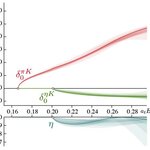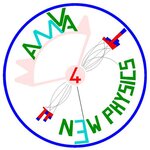Physics

The CERN Director General Rolf Heuer issued the following statement today, reporting the discovery of exotic pentaquark states by the LHCb collaboration:
Geneva, 14 July 2015. Today, the LHCb experiment at CERN’s Large Hadron Collider has reported the discovery of a class of particles known as pentaquarks. [...] “The pentaquark is not just any new particle,” said LHCb spokesperson Guy Wilkinson. “It represents a way to aggregate quarks, namely the fundamental constituents of ordinary protons and neutrons, in a pattern that has never been observed before in over fifty…

Working as an experimental particle physicist in a large scientific collaboration, such as the 3000-strong CMS experiment at the CERN LHC, is a (not too uncommon) privilege, for several reasons. One of those reasons is of purely numerical kind: the number of publications that bear your name grows by the day, and may reach four-figure values in the course of a couple of decades (I am about to cross that point with my publication list, in fact). But what value do those thousand articles have for the sake of assessing your value as a scientist ? Very little, indeed, and in fact all the…

Quarks and antiquarks are the teeny, tiny building blocks with which all matter is built, binding together to form protons and neutrons in a process explained by quantum chromodynamics (QCD).
According to QCD, quarks possess one of three charges that allow them to pair in various combinations, such as mesons--elementary particles composed of one quark and its corresponding antiquark. Force carrier particles, known as gluons, hold the quarks together by exchanging and mediating the strong forc e, one of the four fundamental forces.
This structure is the foundation of all matter in the…

When you create an energetic collision between two protons, as the Large Hadron Collider does at large rates and very high energy, the question is what is the chance that a rare process is generated. In the quantum world, everything that is possible is also mandatory - but it happens with a probability that is sometimes very hard to calculate. In spite of being smaller than the nucleus of all atomic elements (except Hydrogen, which is it), the proton is a very complex object. It is composed of quarks and gluons, lots of them; and actually, the composition depends on the magnification…

Apologizing for a hiatus due to vacations, I am posting today a tentative logo of the Marie-Curie network I am coordinating, AMVA4NewPhysics. A brief explanation of the symbols at the basis of the logo is given below, in order for you to propose changes or even help by offering different ideas (and if you're a graphic designer, then maybe you consider producing a better one for us ?).So, the network aims at using multi-variate analysis tools - what is often called "machine learning", or "statistical learning" methods - for searches of new physics at the LHC. There is thus a component that…

The most popular form of radiation detector used is probably
the Geiger-Mueller (GM) detector. A GM
detector is typically the device seen being used on TV shows and movies when
measuring radiation. The GM detector is the
device which is making clicking noises which clicks faster and faster when it
is exposed to increasingly greater amount of radiation.
A GM instrument is really useful for detecting gamma
radiation although this is generally the most common form of radiation being
sought (although a GM is also often used to find contamination). There are other forms of…

Quantum computing is well into its second decade of hype with little progress being made. Computer chip companies have continued to optimize available physics and have left the quantum kind to the academic sandbox. It's not stable long enough to make calculations.
Perhaps what is needed is an intermediary to transmit information, say
researchers at the Okinawa Institute of Science and Technology Graduate University (OIST).
A study in Physical Review Letters concedes that quantum computing only needs thousandths of a second, but notes that the particles involved are so small that…
A simple and provocative title – The Missing Memristor has Not been Found! This harsh admission of reality without sugar coating is the very title, and not of some opinion piece, but of a scientific paper published by the very same Nature Publishing Group that is criticized right away in that very paper:
In 2008, the discovery of a “missing memristor” was announced with three (!) basically simultaneously timed, [in content!] overlapping Nature group articles and on the front pages of major newspapers, all as if an almost 40 years ago predicted, deeply scientifically significant…

I was saddened today to hear of the death of David Cline. I do not have much to say here - I am not good with obituaries - but I do remember meeting him at a conference in Albuquerque in 2008, where we chatted on several topics, among them the history of the CDF experiment, a topic on which I had just started to write a book.
Perhaps the best I can do here as a way to remember Cline, whose contributions to particle physics can and will certainly be better described by many others (for example,http://www.pa.ucla.edu/content/david-b-cline ), is to report a quote from a chapter of the…

The Marie-Curie network I am coordinating, AMVA4NewPhysics, is going to start very soon, and with its start several things are going to happen. One you should not be concerned with is the arrival of the first tranche of the 2.4Meuros that the European Research Council has granted us. Something more interesting to you, if you have a degree in Physics or Statistics, is the fact that the network will soon start hiring ten skilled post-lauream researchers across Europe, with the aim of providing them with an exceptional plan of advanced training in particle physics, data analysis, statistics…